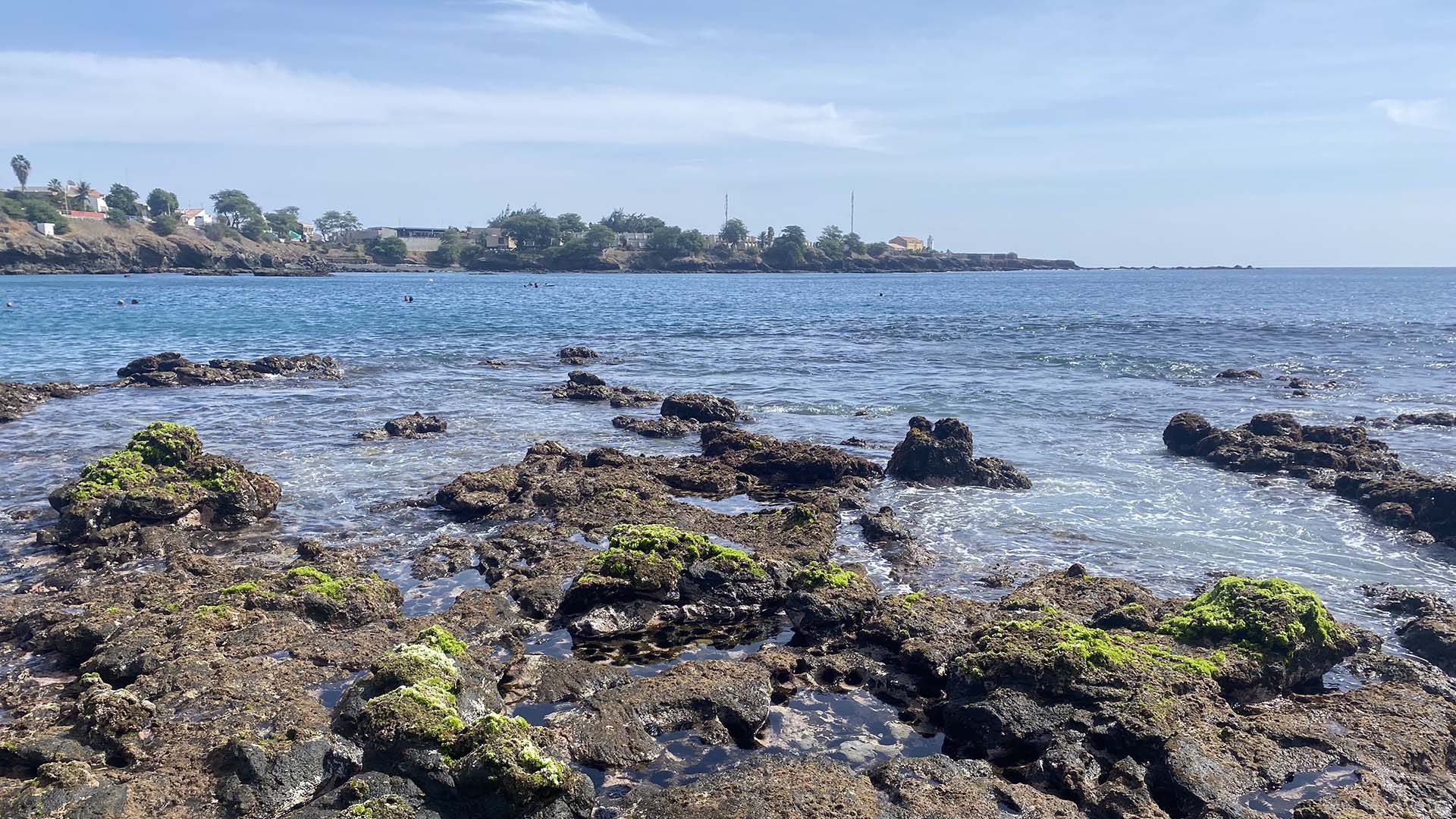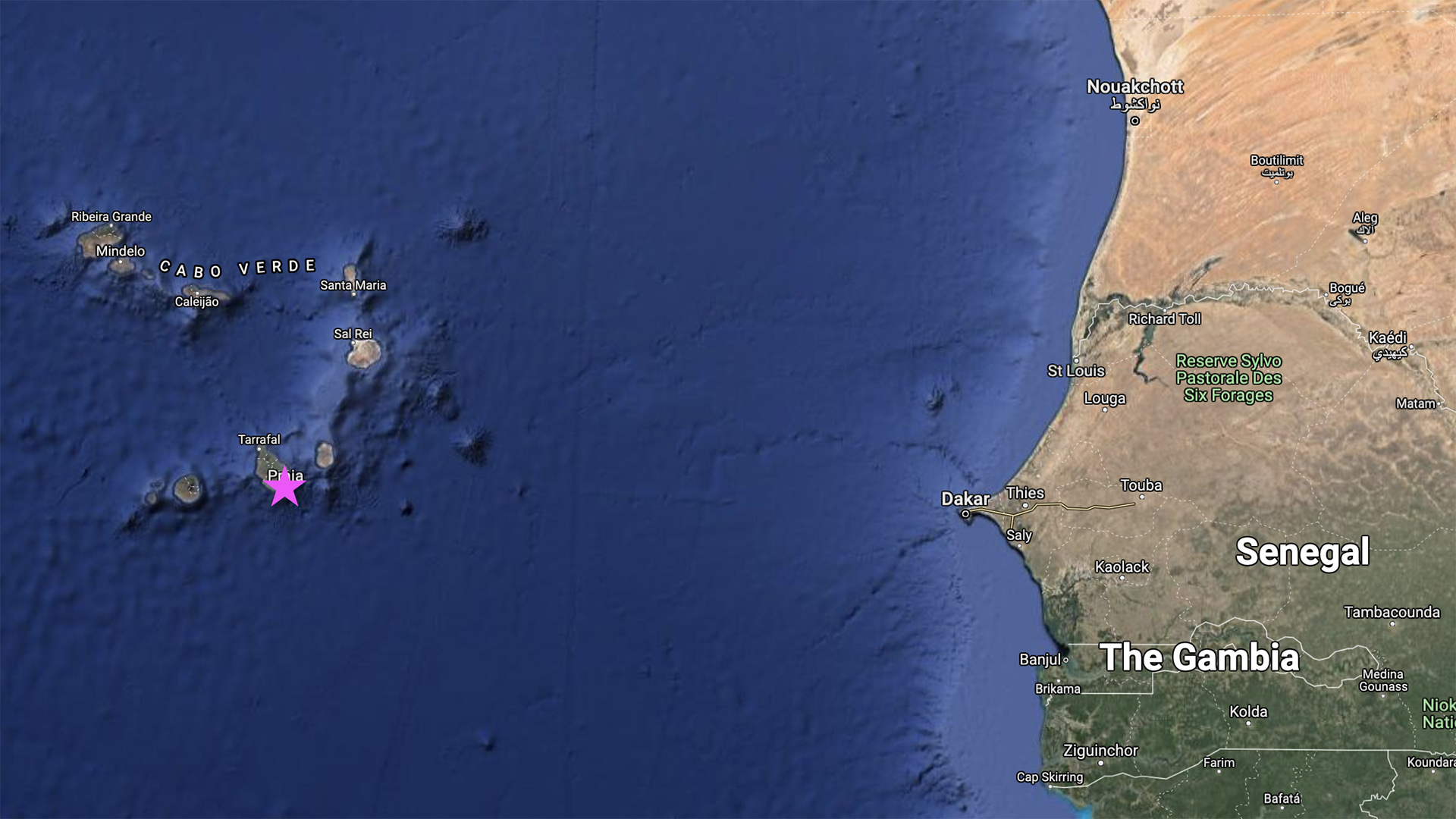January 4, 2022
Location: 14.9 N, 23.5 W

Tide pools on the beach in Praia. I can see urchins, algae, and some barnacles—can you?
Earth scientists call the region between latitudes of about 20 S and 20 N the “tropics”. Since Praia is at 14.9 N, it is in the tropics. When I say “tropical”, you might picture palm trees and rainforests; however, Cabo Verde is near the same latitude as the Sahara desert and is actually quite dry! It only gets about 10 inches of rain a year – you can compare this to Los Angeles, which gets an average of 15 inches a year, or Miami, which gets an average of 62 inches of rain a year. So while Cabo Verde is in the tropics technically, it is not super “tropical” as we typically think of the term.

Map of the Cabo Verde archipelago off the coast of Africa. The pink star marks Praia, where the ship is docked. You can see that the islands are at about the same latitude as the Sahara desert.
However, there are some regions of the islands that are more green than others! Science team members Ian, Leah, and Sam took a trip up to the north side of the island that we are on. There are mountains and more beautiful beaches there and it is much less populated than Praia, the main city where we are staying.

Mountains on the north side of the island. Photo by Leah Chomiak.
As a country in west Africa, Cabo Verde was a desirable place for Europeans, and particularly the Portuguese, to use as a stopping point for their ships. Before the 15th century, Cabo Verde was unpopulated. However, the Portuguese used the islands as a staging point for supplies, goods, and also enslaved West Africans, who would be transported to North and South America as slaves. While we do not know exact numbers, it is estimated that approximately 13 million West Africans were forcibly transported to the Americas, many through Cabo Verde. It is important to recognize that these beautiful places where we get to explore and do science often have deep histories.
I hope the next time I write will be from the ship! Please keep your fingers crossed for all of us as we get Covid tests and load the ship tomorrow.
